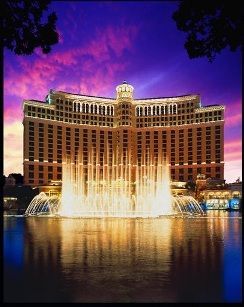Requiem For The Supercar: Last Days For Bugatti Veyron, Pagani Huayra, Lamborghini Aventador?

We are living at the end of an era, during the swan song of greatness, the twilight years of a golden age, the last days of the great supercars, ultra-high horsepower paeans to driving: the Bugatti Veyron, Pagani Huayra, McLaren MP4-12C, Lamborghini Aventador, Ferrari F12 Berlinetta. They may all soon be replaced by electric cars and hybrids.
I recently spoke with Craig Jackson, chairman and CEO of Barrett-Jackson Auction Co., a leading auction company dealing in collectible cars. He thinks some of the next great cars at auction could be this generation of supercars, because they are what people lust after and what most cannot afford. And because they are simply incredible feats of design, engineering and soul.
In the long term, I think they're going to hold their value. This golden era of producing 750, 1000 horsepower cars is not going to last, Jackson said.
Jackson is probably right, too. A champion of American horsepower, Carroll Shelby, passed away in early May, just a little over a month after the highest horsepower Shelby ever, the Shelby 1000, made its debut at the New York International Auto Show 2012. According to Jackson, Shelby told him when he was developing the car that it would be the last he ever worked on.
As if to emphasize that the great supercars like the 987 horsepower Bugatti Veyron or the 1100 horsepower Pagani Huayra may soon be dinosaurs, the ultimate test of automotive speed, durability and excellence, the 24 Heures Du Mans, was won for the first time by a hybrid on Sunday. The Audi R18 E-Tron Quattro beat out all the competition, including Toyota's contender, the LMP1 hybrid.
Porsche is working on its own departure from the supercar glories of the 911. The company has been quietly building a hybrid terror on wheels, the Porsche 918 Spyder. Of course, there's no indication that Porsche, or Pagani or Bugatti for that matter, are going to stop making their crown-jewel supercars any time soon, but the exotic supercar market does seem to be making a quiet migration away from the incredible raw-horsepower of the current generation to the greener, more eco-friendly electric motor.
This may be a good thing for the world. Common wisdom is that the technology used in ultra-exotic and high-end sports cars eventually becomes the basic features of mass-production cars. Drivers the world over do need to be weaned off of gasoline, now more than ever, and the shift to hybrids and electric cars will ultimately benefit everyone. But nevertheless, we are witnessing the final days of something glorious.
While you would be hard-pressed to find anyone willing to say that we should continue driving gas-guzzling monsters over prim and proper EVs, something will be lost nevertheless. When I was a child I wanted nothing more than a Ferrari F40, perhaps the first modern supercar. Now I want nothing more than to drive the Pagani Huayra. The Huayra may be the last vestige of a childhood dream, and that is a tragedy.
Regardless of how good they are for the environment, how efficient, how utilitarian, how torque-y the acceleration, electric cars will always lack the glorious soulfulness, absurdity and excitement of the great supercars. The best cars have always been loud and fast, sporting over-the-top styling. Electric cars, even the quite capable Ford Focus Electric, inherently lack the feel of being the figment of a 10-year-old's favorite daydream. They are cars for adults. The great supercars are vehicles built for the child-like dreamer in all of us, and that dream may be coming to an end.
Check out the photo gallery above to see some of the last great supercars, and an example of what might soon replace them all.
© Copyright IBTimes 2024. All rights reserved.





















